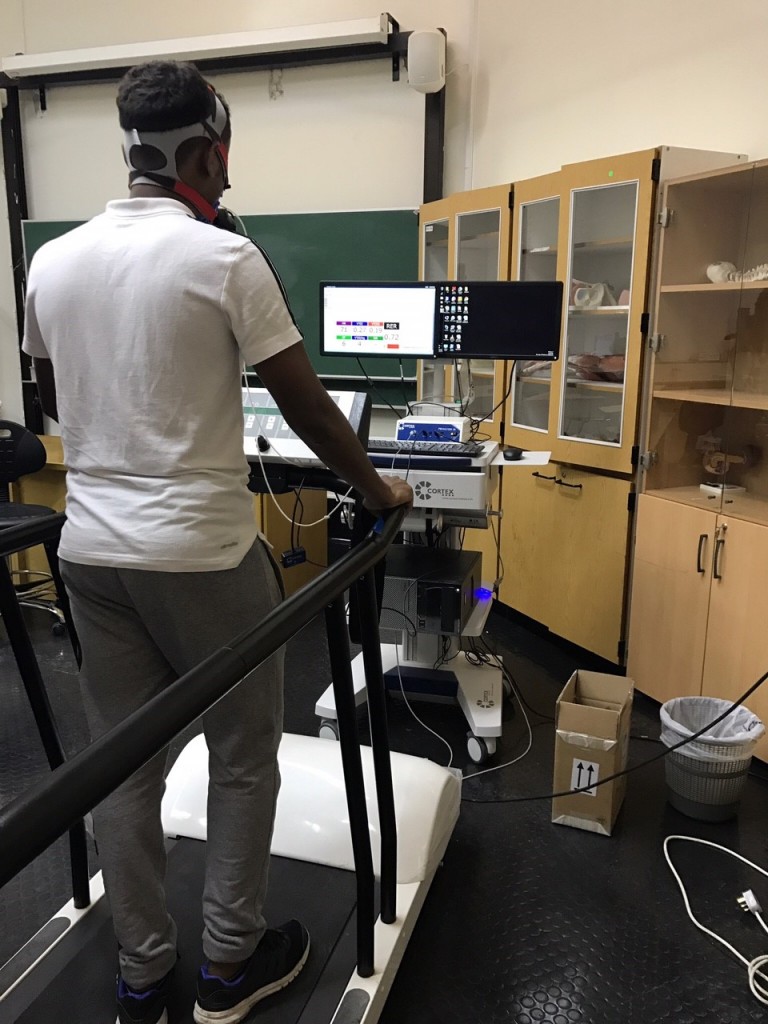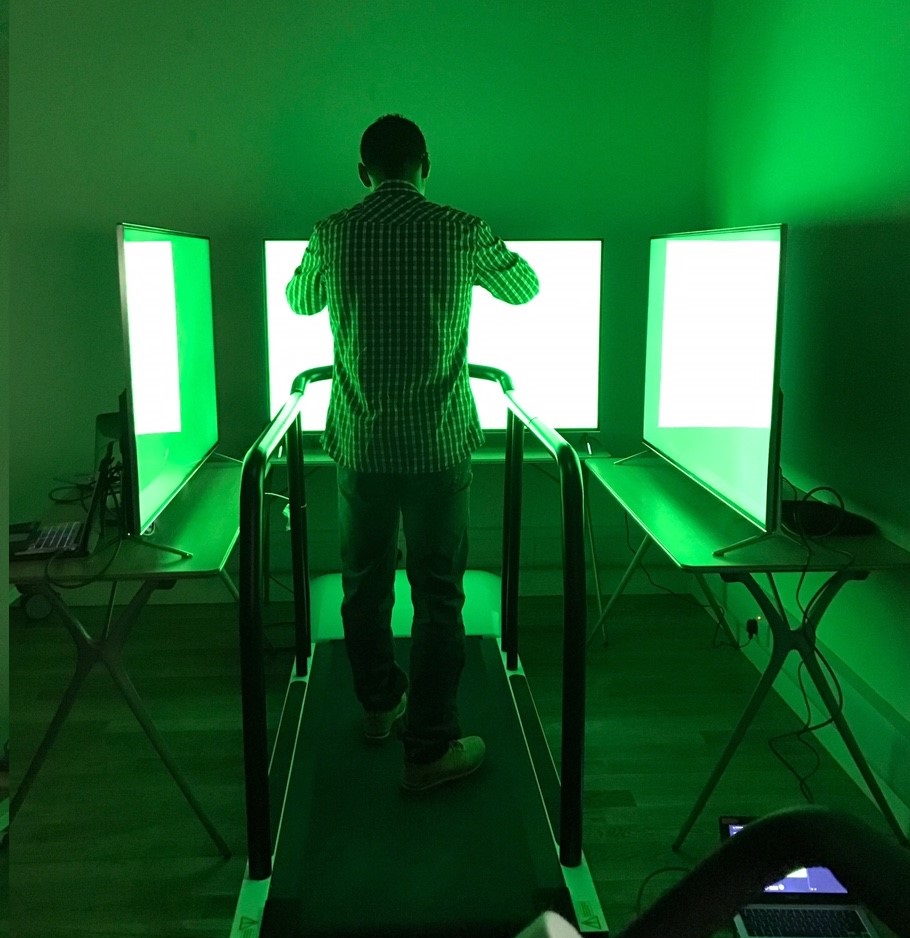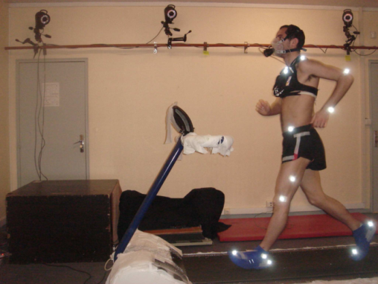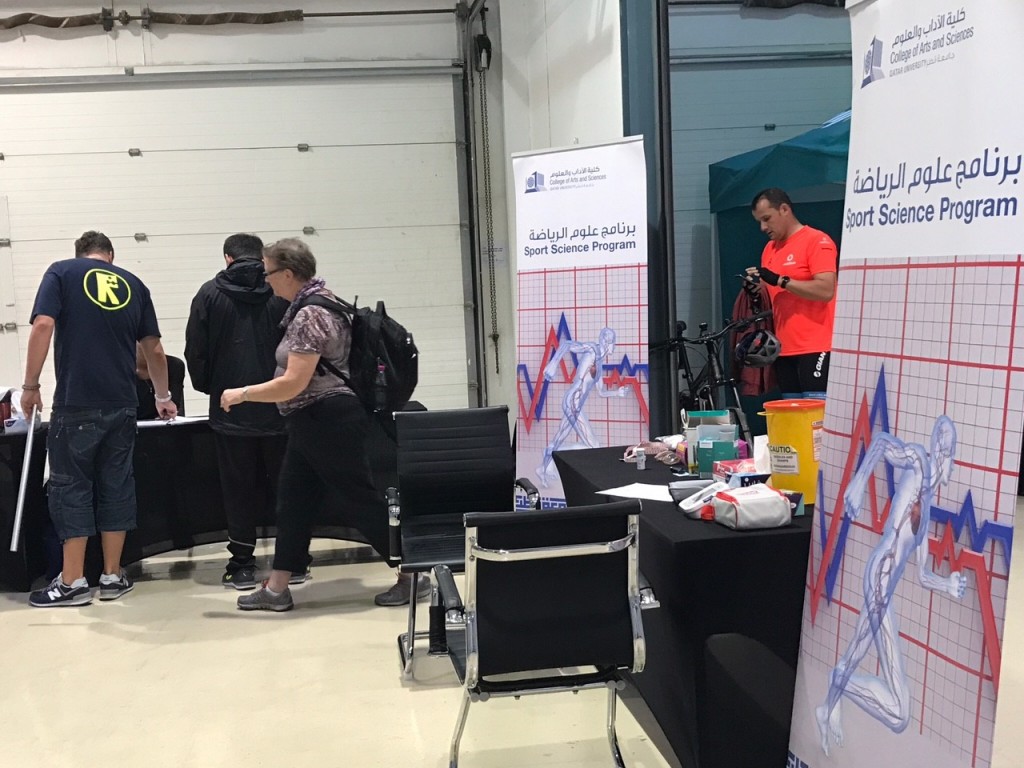Research Projects

Walking is the most natural and important activity of daily living as it refers to the primary type of terrestrial human locomotion. Analyses of walking patterns typically examine the speed and manner in which people prefer to walk. Even though humans can walk at speeds ranging from near 0 km/h to 9 km/h, they typically only use a very small and limited range of speeds around 4.5 km/h. The preferred walking speed (PWS) is usually used in clinical settings as an indicator of a person’s mobility. Therefore, improving their PWS is considered as a significant clinical goal. Many studies on gait analysis tried to identify the basic parameters of normal unconstrained gait in different populations. Despite the fundamental common shared characteristics, walking patterns may vary from a person to another according to several factors such as age, gender, physical characteristics, etc. In a study examining the “pace” of random pedestrians in 31 cities around the world, differences in the walking speed were found to be linked to parameters such as climate, economic variables, size of population and cities (Levine & Norenzayan, 1999). More recently, a study has put forward the impact of the cultural background on walking norms by revealing several significant differences in basic gait parameters between young Kuwaiti and Swedish adults (Al-Obaidi et al., 2003). Specifically, the authors presented the first evidence concerning walking patterns in a population from the Gulf region. This reveals the need for a specific normative database targeting healthy young Qataris. Creating such databases for Qatar is desirable for rehabilitation purposes for people with impaired walking patterns (e.g., elderly fallers, people suffering from stroke consequences, Parkinson disease, etc).

The complex interaction between human biological system and colored environments may give rise to perceptions and meanings that may precipitate the appearance of affects, cognition and behaviors (Briki & Hue, 2016). Colors can be characterized in terms of appetitive (green) and aversive (red) cues that have been associated with approach and avoidance motivational system, respectively (Elliott & Maier, 2014). Research mostly investigated relationships between colors and feelings (Briki & Hue, 2016), while motor behaviors have received little attention from color psychologists. As a result, we aim to examine whether perceiving green and red environments affects the most natural forms of human locomotion (i.e., self-selected walking and running).

In order to better understand the process of learning a complex motor skill, an effort was done to identify principles of movement reorganization. However, many studies refuted the existence of generalized invariant “strategies” for mastering the redundant degrees of freedom and emphasized the importance of the constraints especially those linked to the task itself. We aimed to identify common characteristics in movement reorganization when 7 participants practiced (4 sessions) a new gait pattern at speeds higher than that of the preferred walk-to-run transition by placing biomechanical constraints on distal lower joints (i.e. racewalking regulations). Movement analysis was performed on kinematic variables computed from a whole-body model (VICON). First, using ANOVAs we assessed practice-related changes in spatiotemporal parameters, angular displacements and relative phases (inter-/intra-limb coordination). Results indicated an immediate reorganization in coordinative patterns (e.g., relative phases and stride frequency) accompanied by a general decrease in the initial movement variability (i.e., standard deviation of many key variables). However, the large number of studied variables made it difficult to put forward common “strategies” used by participants. Second, we ran principal component analyses (PCA) on 8 major angular displacement variables for all participants, trials and sessions. PCA were used to evaluate the coupling in the motion of body segments that synchronize in different components (dimensions), each believed to be controlled by the CNS as one unit. Results indicated that the majority of participants immediately recruited an additional task-specific control dimension compared to normal walking. Moreover, this analysis revealed a gradual synchronization of the knee joint motion with that of the early established pelvis transverse plane rotation.

According to the Qatar STEP survey (2012), 71.8% of Qatari males aged 18-64 years and 68% of Qatari females of the same age group suffer from overweight and obesity, while 40 percent of the Qataris suffer from obesity or morbid obesity (National Health Strategy 2011-2016, Supreme Council of Heath, 2011). The alarming prevalence of overweight and obesity creates a major health burden to Qatar (e.g., CVDs, cancer, type-2 diabetes) given that obesity is still increasing among young and adult Qataris. To date, obesity-related research has received relatively little attention in Qatar and is considered a central focus for present and future investigations.
The prevention of obesity includes a decrease in energy intake (i.e., food) and an increase in energy expenditure (e.g., physical activity, exercise and sport). Decreasing sedentary behaviors contributes majorly to the development of a healthy population through encouragement to adopt physically active options. Walking is the main and most used form of daily physical activity especially for individuals with obesity that do not engage willingly in diverse forms of exercise. Walking, also considered as the most comfortable, suitable and safe form of exercise for people with overweight or obesity, holds great promise for weight management. Taken together, the information provided here points to the need of better understanding of the special characteristics and limitations of walking patterns in obese individuals.
Previous studies have indicated that adults suffering from obesity prefer to walk less and more slowly, depending on the degree of obesity (e.g., Melanson et al. 2003). However, contradicting results also showed that the preferred walking speed was not slower in obese individuals compared to normal weight women (Browning & Kram, 2005). Although there are many aspects of walking that could be considered as “vital signs” for clinical examinations, speed has often been recommended for use as a measure of status and outcome. In order for any clinician to make judgements about the normality of a patient’s speed, reference values are required for comparison, which is still lacking in Qatar. Indeed, walking speed is considered as a robust measure for assessing and monitoring functional status (Verghese et al., 2011) and overall health (Studenski et al., 2011). Walking speed has been shown to be predictive of a range of outcomes, including response to rehabilitation (Goldie et al., 1996), functional dependence (Shimada et al., 2013), mobility disability (Rosano et al., 2008), cognitive decline (Inzitari et al., 2007), falls (Montero-Odasso et al., 2005), institutionalization (Woo, Ho, & Yu, 1999), hospitalization (Montero-Odasso et al., 2005), cardiovascular-related events and mortality (Matsuzawa et al., 2013), as well as all-cause mortality (Studenski et al., 2011). Furthermore, a correlation has been established between slow self-selected walking speed and lower quality of life (Ekstrom et al., 2011), decreased participation (Ekstrom et al., 2011), and presence of depressive symptoms (Brandler et al., 2012).
This first aim of this study would be to establish reference gait values for both comfortable and maximum gait speeds and obesity-related changes in gait kinematics.

The aim of this pilot study is to assess the levels of physical activity, sedentary behavior, physical fitness and several health-related indicators (e.g., body fat percentage, dietary habits) among children and adolescents in schools and adults in the workplace in Qatar.
